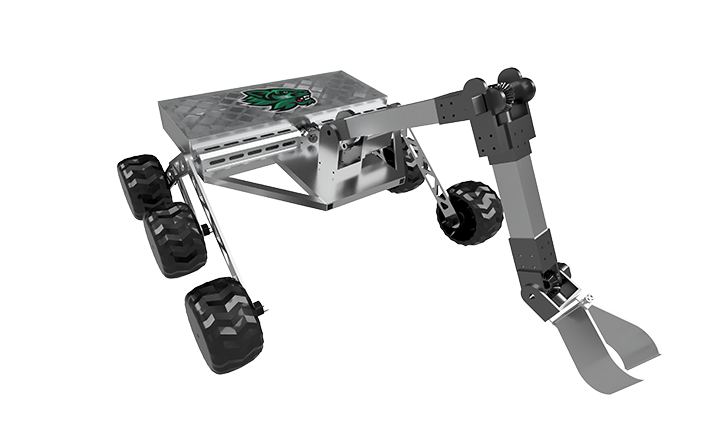Engineering a Mars rover
NASA's Curiosity Rover will have some competition this year from Binghamton University's brand-new Mars Rover Team.

Engineering, computer science, biology and geology at Binghamton University are all coming together to build a functional Mars rover.
If people really do colonize Mars, they might need a robotic friend to help explore and set up our outposts.
The brand-new Binghamton University Mars Rover Team is ready for that challenge.
The team is building a rover that can not only survive conditions on Mars, but can also run through a checklist of things that a Mars outpost might need.
The rover needs the ability to help with scientific discoveries by drilling, taking and analyzing samples and using that information to detect any signs of life. Likewise, it should be able to use tools, twist screws and pour fuel or water.
It also needs to be able to travel on its own to find tools at certain GPS coordinates or bring tools to a colonist. When traveling, it has to be able to pass through gates and survive tumultuous terrain.
The rover developed by Binghamton students will compete against the designs of other schools as part of the Mars Society’s annual competition.
This is the first year that Binghamton University has created a Mars rover, which requires a lot of different skill sets.
The team is made up of 60 students from all the various Watson School departments as well as the departments of geological sciences and biological sciences.
Managed by the Binghamton University student chapter of the Institute of Electrical and Electronics Engineers (IEEE), the team is divided into seven sub-teams, including mechanical, electrical, manipulation, communications, navigation, science and software.
Sam Stone, president of the IEEE chapter, said that the variety of sub-teams gives students plenty of options to match their interests.
“We have seven different sub-teams focusing on things that range from software to communications, mechanical to electrical,” Stone explained. “Within each of these sub-teams, there are even more opportunities for students to specialize on a certain part of the rover. The team has something for everyone.”
While nearly 100 other schools have Mars rover programs, fewer than 40 will be asked to compete at this year’s Mars Society’s competition in Utah.
“We are going up against some really big names. Thankfully, the Mars Society puts a $17,500 limit on how much any school can spend on their rover, which means we have a better chance against some of the big schools,” said Stone. “But there isn’t a limit on how much is spent testing the rover so we still have to compete with schools that have entire labs built to replicate conditions on Mars!”
The team has been working on a preliminary design and should have a completed rover before the end of the month. The group will find out if the rover is advanced enough to make it to the competition in March and, if it qualifies, will travel to Utah in May to test the rover against the other qualifying teams.
The Thomas J. Watson School of Engineering and Applied Science’s Dean’s Office and the Electrical Engineering Department have already signed on as sponsors, but Stone said the rover team could use more donations and mentorship, especially from anyone in the field of robotics. The team is also still open to more student participation on any of the sub-teams.
